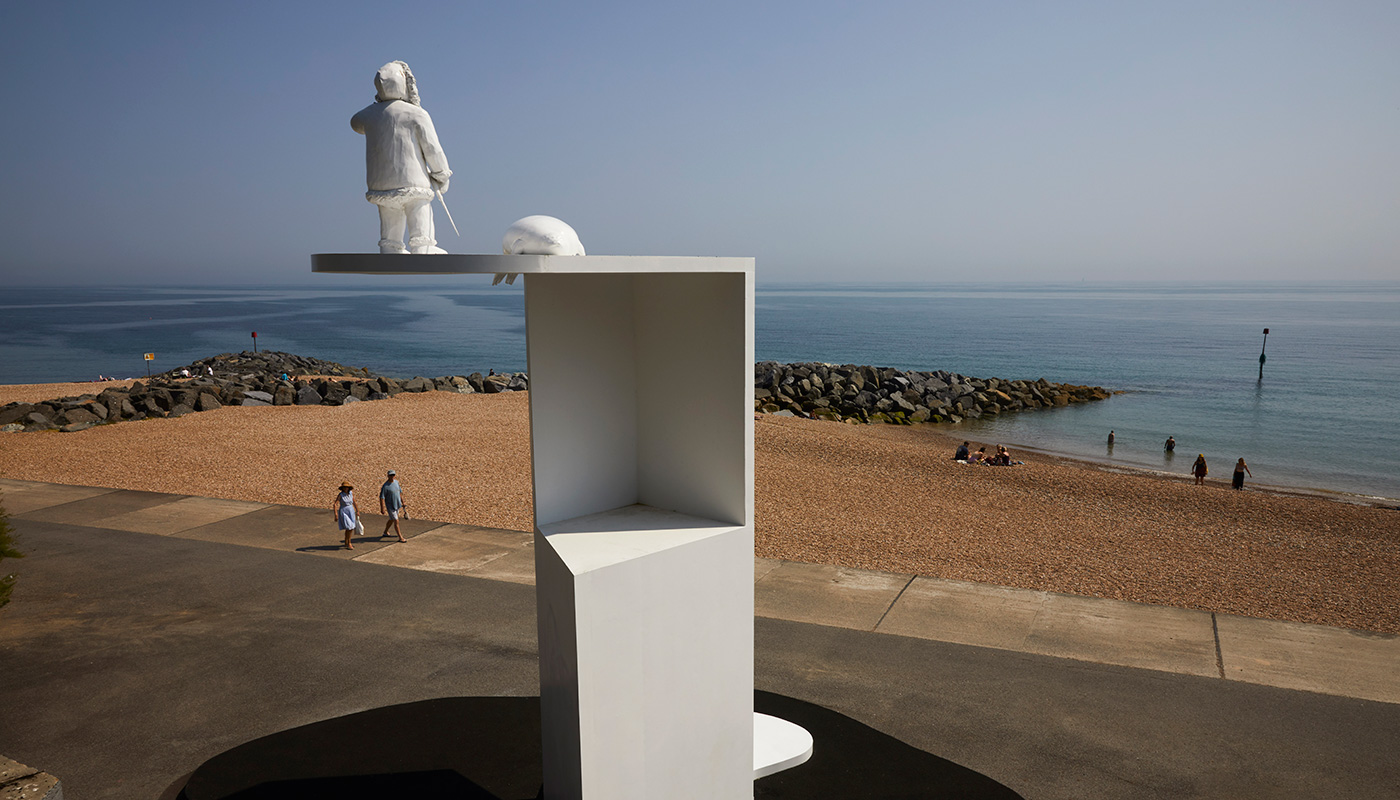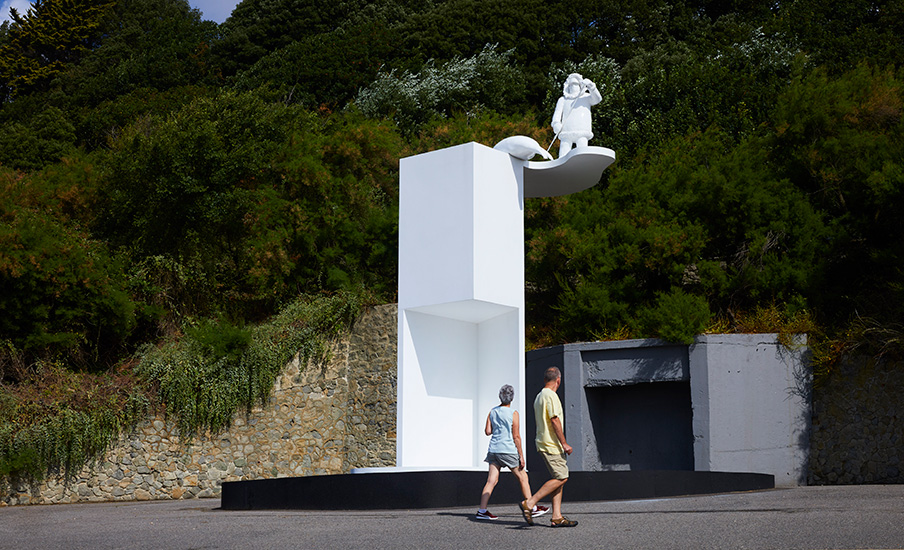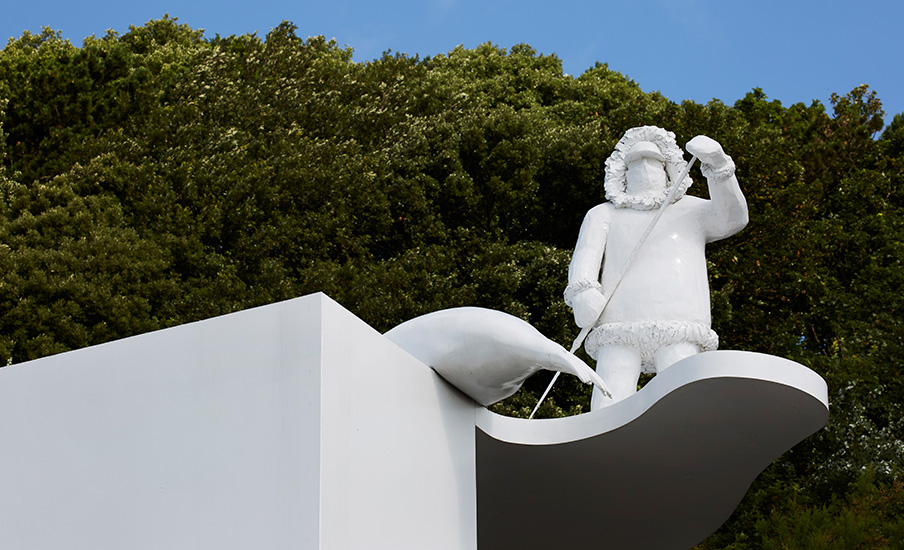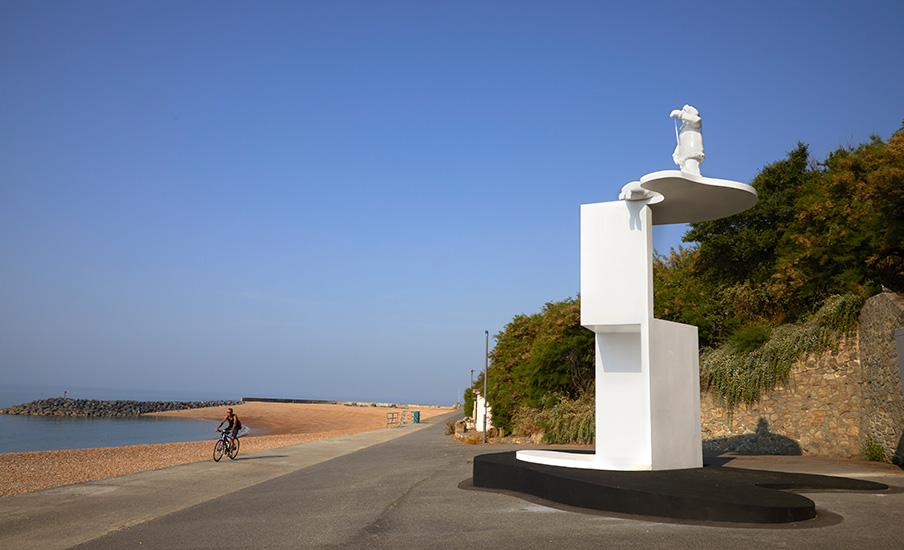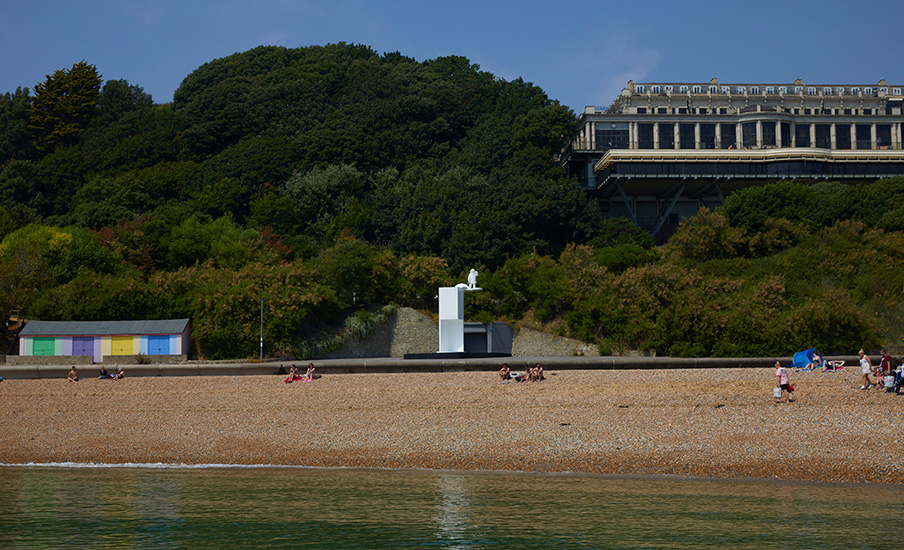Bill Woodrow
Bill Woodrow
The Ledge, 2017
This crystalline modernist architectural composition, echoing the white cliffs between Folkestone and Dover, supports figures of an Inuit and a seal, and sits on a black puddle shape. Sited by the shore, the strong horizontals suggest the rising water level resulting from the disappearing polar ice caps, an iceberg melting into a pool of oil. The human figure and its ecological counterpart, the seal, represent an ancient way of life, standing on thin ice.
Climate change, and its effect on people who are on the front line, or at the edge of that change, has been a preoccupation of Woodrow for many years. From the start, his artworks made use of ‘secondary’ materials (human artefacts) as raw materials. In this way he was a composer of narratives through using the existing vocabulary of the industrialised world. When he began to cast his sculptures in bronze in the 1990s, the trajectory of his work remained unchanged: the bronzes would very often be composed of industrially produced objects arranged to create a legible narrative. A deep interest in the history of humanity as well as the history of the natural world unsurprisingly led him to express his concern for the impact of human activity on the environment and ecology, and his admiration for the astonishing resilience of ‘nature’.
Find more of Bill Woodrow's work.
Video
Bill Woodrow, The Ledge, 2017. Images by Manuel Vason
Other Profiles
- Banksy
- Adam Chodzko
- A K Dolven
- Amalia Pica
- Antony Gormley
- Assemble
- Bob and Roberta Smith
- Christian Boltanski
- Cornelia Parker
- Cristina Iglesias
- David Shrigley
- Diane Dever and The Decorators
- Diane Dever & Jonathan Wright
- Gary Woodley
- Gilbert & George
- Hamish Fulton
- HoyCheong Wong, Simon Davenport & Shahed Saleem
- Ian Hamilton Finlay
- Jacqueline Poncelet
- Jonathan Wright
- Lubaina Himid
- Marc Schmitz + Dolgor Ser-Od
- Mariko Hori
- Mark Dion
- Mark Wallinger
- Michael Craig-Martin
- Michael Sailstorfer
- muf Architecture/Art
- Nathan Coley
- Pablo Bronstein
- Pae White
- Paloma Varga Weisz
- Patrick Corillon
- Pilar Quinteros
- Patrick Tuttofuoco
- Rana Begum
- Richard Deacon
- Richard Wilson
- Richard Wentworth
- Richard Woods
- Rigo 23
- rootoftwo
- Ruth Ewan
- Sarah Staton
- Sinta Tantra
- Sol Calero
- Spencer Finch
- Stephenie Bergman
- Strange Cargo
- Studio Ben Allen
- Tina Gverović
- Tonico Lemos Auad
- Tracey Emin
- Will Kwan
- Yoko Ono
- Winter/Hörbelt
